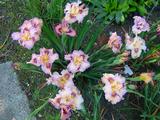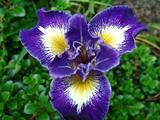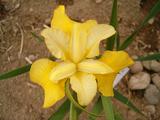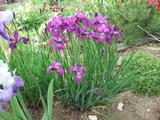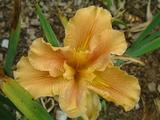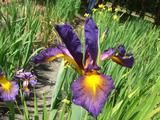Japanese Iris (JI)

Harema No Hikibi (JI)
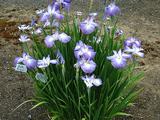
Stella Niagra (JI)

Pink Dimity (JI)
These irises bloom after the Tall Bearded. They prefer full sun and ordinary garden conditions, but require ample
moisture, especially up to bloom time. They will do very well beside a stream or a pond but in cold climates they do not like to have their
roots in water during the winter. Japanese iris prefer a heavy, rich soil with ample organic matter. The soil pH should be slightly acid,
ideally between 5.0 to 6.5. They do not like lime, so do not plant close to cement, as lime leaches out of it.
Plant strong divisions of 2-3 fans. The roots should never dry out during transplanting. Plant the rhizome 1-2 inches deep, preferably in a
3-4 inch depression, which will catch and hold moisture. Since new roots form above the old ones, soil may be gradually added to fill in the
depression over 3 years or so, to maintain plant vigor for a longer period of time. Keep division well watered after planting, until
established. Japanese iris are heavy feeders. A liberal application of a balanced fertilizer, such as 12-12-12, in the early spring and just
after bloom is helpful.
Transplanting may be done from spring until fall but shortly after bloom time is best. This gives the new roots time to anchor the plant before
winter freezes. A heavy 2-3 in. mulch is beneficial to conserve moisture and reduce weeds. If plants are set out in fall, mulch heavily before
the winter.

